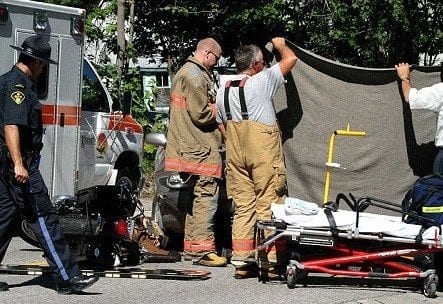
Here’s a great video from the MSA for motorcycle owners:
“https://www.youtube.com/embed/YyxU1jTUz-k
The MSA also reminds drivers that April is Distracted Driving Awareness Month. Failing to see motorcycles and carelessly causing an accident generally causes more severe consequences for the motorcyclist than for the car owner.
MSF’s president, Tim Buche, points out that, “When a car hits a motorcyclist, there is often direct vehicle-to-human contact” with the potential for loss of life or crippling injury—and no one wants to carry the burden of responsibility for causing a tragic accident. But, according to Buche, “This can all be avoided by making a conscious effort to drive fully engaged and undistracted.”
The MSF has a handy factsheet for car and truck drivers on how to manage in traffic with motorcycles, with ten points you need to know about motorcycle traffic. Here are a few key points we distilled from the MSF factsheet:
- Take an extra moment to look for motorcycles, whether you’re changing lanes or turning at intersections. Always check your blind spot!
- Because of its small size, a motorcycle may look farther away than it is. When checking traffic to turn at an intersection or into (or out of) a driveway, predict a motorcycle is closer than it looks.
- Motorcyclists often slow by downshifting or merely rolling off the throttle, thus not activating the brake light. Allow more following distance, say 3 or 4 seconds. At intersections, predict a motorcyclist may slow down without visual warning.
- Stopping distance for motorcycles is nearly the same as for cars, but slippery pavement makes stopping quickly difficult. Allow more following distance behind a motorcycle because you can’t always stop “on a dime.”
Remember, half of motorcycle accidents are caused not by motorcyclists or road conditions, but by car and truck drivers. Everyone needs to do their best to drive defensively and safely to avoid tragic collisions.
Call Jay Stillman, Accident Attorney, at 615-244-2111 or email me at: jay@jstillman.com
BECAUSE WE CARE….
Stillman & Freidland Attorneys






